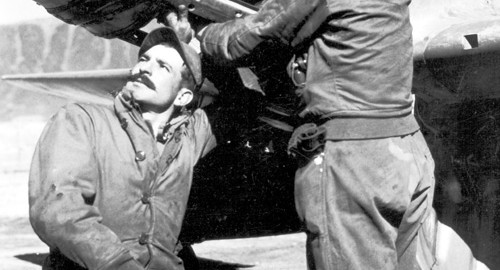Gainesville, Florida Veteran’s Day Remarks
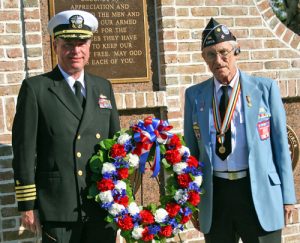
For almost a hundred years, now, America has devoted this day–the day the guns fell silent to end the First World War–to honor and remember–the American Soldiers, Sailors, Airmen, Marines and other members of our armed services who have fought for–and protected–our country—and the right to freedom and self-determination around the world for over two hundred years.
Across our nation, we join in remembering and reflecting reflect on the service and sacrifices of American veterans of all our country’s conflicts.
As a brand new 17-year old Airman at NAS JAX out on the flight line servicing the old S2F Tracker ASW aircraft, I didn’t think about eventually being a Veteran. I was too busy making sure that I was doing my job properly.
I was just an Airman Recruit, a little guy I thought in the Navy’s big picture. But, I knew that someone else’s life depended on my thoroughness and professionalism. And, I always remembered one of my grandfather Arch Connors’–a Jacksonville building contractor–favorite sayings, “you told the man you could do it.”
In preparing to speak to and about Veterans today, I checked the definition to see what it might tell us about this esteemed category of citizen-soldier.
As I dug into the origins of the term “veteran,” I learned that it was originally a Latin word—“veteranus” from “vetus” meaning…“old.” I knew that certainly didn’t apply to me—or to any of us here today—of course—despite what I see in the mirror—when I dare to look.
I knew that our use of the term “veteran” referred instead to a person who is long experienced or practiced in an activity or capacity. Certainly those who have served in our Armed Forces have much experience and practice—we call it “training as we fight”—something we do constantly.
Over time, we came to call those who had served in our Armed Forces, “veterans” as a tribute to both their years of service and to acknowledge the extraordinary accomplishments of the American military forces–from the Revolutionary War to this day. Since 1775—some 231 years—those who have served in our Armed Forces have protected our democratic way of life and defended Freedom. Not only do their services span the life of our country—they have been—and are—the life of our country. Without their sacrifices America would have ceased to exist long ago. And, without a strong, prepared, forward deployed military capability, our country’s future is doubtful.
I don’t come to you today asserting that war or military operations are glorious or romantic in some swashbuckling way. They are not.
They are instead highly demanding emotionally and physically. Frequently that can become brutal, dangerous, life-threatening, risky and perilous confrontations with other humans who are attempting to kill you before you kill them.
When America’s young men and women have to be sent into harm’s way it is likely that some of them will be wounded or killed in action.
Even so-called “peacetime” is dangerous. Serving in a military unit that trains as it fights also brings casualties and too often death, even though every effort is made to make training both realistic and safe. I can assure you from much personal experience, that conducting flight operations at sea, for example—day or night—is indeed, risky business.
On my first deployment as a new Ensign aboard an attack aircraft carrier I saw several serious crashes, a mid-air collision between two jets, a “cold cat shot” that dribbled the aircraft over the bow as the pilot ejected—too late–into the water.
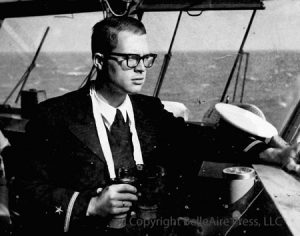
I was the Officer of the Deck one cold, stormy night in the Mediterranean when a young Airman was blown off the flight deck. The fantail lookout reported on the sound powered telephone that a man was in the water and that he had thrown him a preserver and a smoke flare to mark the spot in the dark of night and heavy seas. He had fallen—or been blown—off the flight deck some 50 feet into a stormy, winter sea. Time was critical before he drowned or succumbed to hypothermia.
I grabbed PriTac—the primary tactical and maneuvering radio circuit—to notify the rescue destroyer steaming in our wake just 1,000 yards astern. They Rogered that they had the light in sight and were launching their whale boat with its rescue swimmers.
Soon, an excited voice came over the PriTac circuit—“Riptide, this is Fancy Dancer,” the call sign for the rescue destroyer, “we are recovering your man overboard.”
I could hear the audible sighs of relief from around the darkened bridge from the watch team. Then, silence for many heavy minutes as we on the Roosevelt’s bridge waited nervously for the next transmission. Why was the confirmation taking so long? What was wrong?
“Riptide,” the PriTac boomed and we all jumped. “This is Fancy Dancer himself” meaning it was the Captain of the destroyer. His voice was breaking as he tried to control his emotions. “We had him”…he paused…and our hearts stopped…”but he slipped away.”
The cold, dark crashing sea had claimed another victim. One of us.
The darkened bridge was silent, except for a guttural “damn” from direction of the Captain’s chair. A gloom settled over the ship for many days as each of us mourned our lost Airman shipmate in his own way.
In the big scheme of things, he might be thought of as a little guy. But we knew better. He meant a lot to all of us on that ship. Even though most of us had not known him personally, he was one of us, a shipmate living among us, sharing our meals and hardships, serving his country by doing his important job to the best of his ability–making his important contribution to the ship’s mission. I will never forget him or the many, many others in military service with whom I have served over the years—the most dedicated, the most professional, and the most honorable, in my view, of Americans.
Glory was not what our Veterans sought when they served in uniform. They love their country and know that its survival and that of Freedom itself, often depends on whether they—and their shipmates and buddies—fulfill the missions and duties asked of them by their country—duties where professionalism and dedication by every member of the unit—be it a command, ship, wing, squadron, company, or battalion—often made the difference between life and death for those who depended on you. Certainly they made the difference in whether or not your unit fulfilled the mission expected of it by our country.
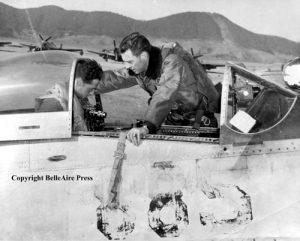
As we remember and honor our Veterans today, we should keep in mind that…we recently observed the 60th anniversary of the start of the Korean War. I would like to tell you one other story of a so-called “Little Guy,” a story that I included in Truckbusters From Dogpatch. I have edited the original that was written by then Air Force Journalist William J. “Sandy” Colton who, after military service, went on to complete a distinguished career with the Associated Press. Colton held his own with other distinguished military journalists of the period, including Ernie Pyle and Andy Rooney. I believe it illustrates best my personal salute to our Veterans this afternoon.
“Imagine that you are visiting a fighter strip such as that maintained by the 18th Fighter Bomber Wing in Korea during the Korean War. Standing near a Squadron operations tent at some “airfield” that was until a few days ago was a dried rice paddy, you watch an F-51 Mustang taxi into a parking area.
A Little Guy wearing greasy coveralls signals the Mustang into its parking position. The engine revs up, coughs, then spits off while the Little Guy chocks the wheels and climbs up on the wing to help the pilot out of his harness.
“How’d it go, Sir!” he asks.
“Rough engine,” answers the pilot. “I checked the mags. She almost cut out on left mag. Better check the plugs.”
Before the pilot has left the airplane to turn in his personal equipment that Little Guy is tearing off the engine cowling to check the spark plugs.
Who is this Little Guy?
You rarely read about him but he is pretty important.
Who is that Little Guy?
He’s the crew chief. Go over and look at his hands. Under the grease and oil you’ll see that they are scarred, chapped and cracked with skin torn off at the knuckles. Those hands symbolize long hours spent working with a wrench—bare hands in cold, miserable weather. The crew chief’s lungs are probably filled with dust blown up by the propwash of passing planes—his shop is an open field, the parking area. After a rain he may have to stand in mud over his shoe-tops and search for a fallen nut in deep mire. At night you can see him working by flashlight. Yet, he’s in love with his airplane and doctors it like a sick child to get it in the air again.
That crew chief loves his bird so much that he wants it to be the best in the air—like a proud father shows off his son to friends.
The crew chief, pilot, and bird make up a close knit family. They have a bond of understanding that holds them together. When a pilot and bird have left on a mission over enemy territory our Little Guy “sweats out” their return. He will keep glancing at his watch and when it is time for his bird and pilot to come home he’ll search the skies until he spots his aircraft. Then, a small, proud smile will show through the grease smeared on his face and he’ll run over to the parking area to guide the pilot in. His bird came home.
If the crew chief’s aircraft is not with the returning flight he’ll hurry to where the other planes are parking and wait eagerly for one of the other pilots to tell him what happened. If his pilot and bird went down there is no one more miserable than the crew chief—even though it wasn’t his fault. The grief is as deep and real as that suffered from losing immediate members of your family.
Officially a crew chief’s job is to service his aircraft with minor repairs, but when and if necessary, he’ll work all night to get his bird in the air again and do major repair work, such as an engine change. Normally, like all of those serving with the 18th Fighter-Bomber Wing in Korea, a crew chief’s day in a combat zone starts before daylight and ends after dark. At 0430 the crew chief is in his airplane turning the engine over and giving it a final check before it leaves on an early morning mission. Only after he’s checked the bird’s pulse will he get that first cup of hot coffee!
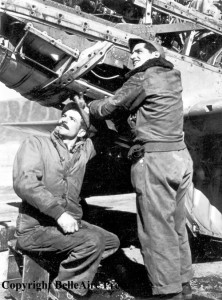
Each time the bird returns from a mission the crew chief refuels it and gives it another check. After the last mission he will give it a final “run-up” before putting it to bed. It is well after dark by then. The crew chief’s hours depend on the amount of work to be done on his bird. If repairs are needed, he’ll work through the night to have it ready by morning.
Pilots recognize the faithfulness of their crew chiefs and stand a little in awe of it. When a pilot returns from a mission he will discuss the airplane with the crew chief—always referring to it as “her.” It’s an affectionate her for a mutual love. Before he leaves, the pilot will let the crew chief know what “their” bird did to the enemy that day. The Little Guy gets a personal debriefing all his own.
Provided there is no work to be done at the end of the day, the crew chief will put his bird to bed. Then, the Little Guy with the greasy coveralls and the skinned up hands will wash up and “hit the pad” in preparation for an early morning warm-up and another day of sweating his family out. The Little Guy is tired, but happy. His bird and pilot are home—safe!”
What a moving tribute Sandy Colton penned to his fellow Truckbusters of the 18th Fighter-Bomber Wing...a tribute that is especially meaningful and timely as we approach the 60th Anniversary of the start of the Korean War.
America is fortunate that in addition to our heroic Sergeant York’s and Audie Murphy’s, we have had tens of thousands of magnificent “Little Guys”—our crew chiefs, ground crews, flight deck crews, logistics and maintenance professionals, the list could be almost endless—of those support and administrative personnel, who were not, after all in the big scheme of things, so little.
They might not have come home with chests full of medals, but they were indeed heroes—all of them—to those of us who served with them. In their professionalism, determination and dedication to duty and their buddies, they stood tallest of all—especially to those of us who served with them. Most of them were, and are, typical Americans—our neighbors, friends, sons and daughters—but doing extraordinarily brave and amazing things–enduring terrible sacrifices–for our shared country–their fellow Americans–and for each other. Their achievements prove that there is no such thing in military service as a “little guy.”
Each of us in service has an important, vital job to do to ensure we fulfill our unit’s mission—live up to our country’s call—and most importantly, to earn and keep the respect of those with whom we serve.
One important lesson that was learned in Korea, one that has stood the test of time, as they say, is that America’s weakened military forces after World War II had directly led to the Korean War. Our perceived weakness, in military arms and strength of purpose, tempted the Communists to exploit war as an instrument of national policy.
They came very close to being successful.
The American people began to see that world peace does not come by unilateral disarmament or weakness, but through strength. In Korea the 18th Wing and other combat units bought with their blood and taught the American people—and the world—the lesson they must learn, it seems, over and over again—that the price of being free is eternal vigilance—and an unwavering readiness to defend freedom—for us and for our allies.
Freedom is not, nor has it ever been, free. It comes with a price.
Veterans of the Korean War paid that price for America, for the Korean nation, and the world half a century ago. The price of their dedicated, heroic service in Korea was steep, it was emotionally draining, at times it was tragic—but history had shown that it was worth it.
Their sacrifices and enormous achievements on the ground and in the air saved a nation and its millions of citizens from lives of unimaginable bleekness, restored an ally, stopped Communist aggression, saved tens of thousands of American and Allied lives, and contributed significantly to the emergence of the United States and its then brand new Air Force as a power for freedom that was better able to maintain peace through preparedness.
On this day we remember them—those who fought in the World Wars, in Korea, in Vietnam, and in the Middle East—in all of our nation’s defenses of Freedom.
We re-affirm our commitment to them and our unabashed pride in them–the flag they saluted and fought for–the country they served and in which we all live and have a hopeful future for ourselves, our children and grandchildren.
America, and indeed the free world, owes them its enduring respect and heartfelt gratitude.
God bless them all on this Veterans Day.
© Copyright 2022 Tracy D. Connors
